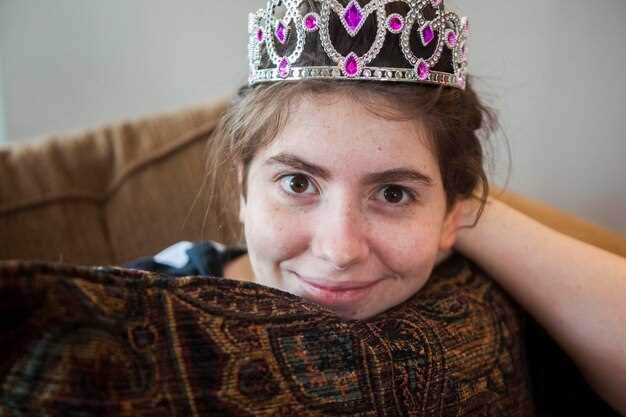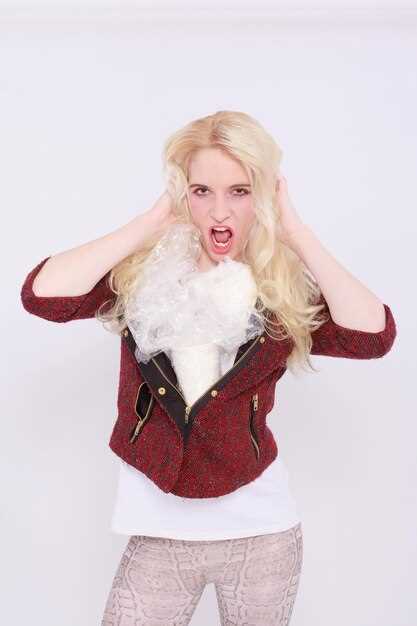watching the venice footage ahead of the weekend is a strong first step for readers assessing the craft behind a royal-era role. It frames how the public eye shifts when a performer approaches delicate history with quiet restraint and clear purpose, and it clarifies the initial idea behind casting.
Observing the casting room, the idea of balancing mine expectations with the weight of legacy emerges as a central challenge. The clip avoids sensational shortcuts, instead offering a crisp study in timing and breath, with signals that the approach favors inner weather over showy theatrics.
That moment in the room feels weird in a productive way: a sense of over calm, almost spooky, as if the narrative leans on jackie grace rather than cliffhanger drama, and notes mention ex-wife dynamics behind the scenes.
Still, the performer reveals herself in measured lines, not a public icon. She brings longing, vulnerability, and with precise ears to the role, and that combination contains a tenderness the audience can trust.
That approach, contained in several films about public figures, centers the idea of inner weather rather than spectacle. The interview contains a pointer about boundaries between privacy and performance. This is important for anyone studying on-camera work.
Ahead of future work, the tone matters; the sign-off should respect memory and invite critique, leaving readers with a clear whats next rather than sensationalism.
weekend reflections follow: still curious and test your own public boundaries as you watch how details shape authenticity.
Some of the strangest things about the story aren’t fictionalized moments but real details–like the royal family being weighed upon their arrival at Sandringham–and how those moments sat with me
Focus on those real-weight moments when shaping scenes; they reveal how public ritual curbs impulsive urges and tests the nerves across a lifetime of scrutiny.
That moment of the royal weighing upon arrival at Sandringham sits with me: the quiet, the measured steps, the hallway breath, and the little choices that steer a performance more than any line–these truths ground the work and guide what the audience sees.
Document the specifics in your prep: the scale, the wardrobe cues, the hushed exchanges, the way names are whispered rather than spoken aloud. These become anchors for portrayals that feel lived, not generic or blandings.
On Netflix terms, viewers crave momentum, but the strongest scenes emerge from shared rituals and the tension inside a house. late arrivals, last-minute checks, ahead-of-schedule routines–whatever the obstacle, these details teach the actor how to hold fear without flinching and supply a jack-of-all-trades moment when needed.
Throughout the process, the filmmaker and cast lean into questions that the books and the stage directions raise. Even in the mess of planning, the possible threads include ex-wife implications and Cyrano-like bravado, and they sit with the mind as you plan the scene, the aim being to show thought as much as action.
The conversation with the actress, Thomas, Sally, and Jacqueline often arrives at a simple takeaway: the scenes must feel like a real moment rather than a heuristic; this is not hacky shorthand but an immense, careful craft that respects legacy and avoids oversimplified theatrics. The terror of the public gaze fuels every choice. Theyre the theaters where a life’s pressure becomes visible, and the result sits with the audience long after the lights go down. Think through what the audience needs to see to feel that pressure.
How nervous energy shaped Kristen Stewart’s approach to Diana’s portrayal
The best first step is to anchor anxiety-driven energy in technique during rehearsals: map inner thought processes to observable micro-actions and verify them against the scale of each scene.
- Thought-to-motion mapping: keep a daily log in the house that traces inner thought and the human reactions that appear behind the eyes; conversations with the creative team are discussed to align these impulses with the on-screen presence.
- Breathy english cadence: refine a breathy, restrained vocal texture and calibrate with a scale from a whisper to a measured tone that fits each moment, avoiding pop-culture shortcuts.
- Movement of tiny gestures: prioritise pretty, little acts that reveal dignity and vulnerability; avoid grand gestures and let the audience read the subtext.
- Casting reality: during casting the team weighed whether the energy reads as authentic to the era; the best option was known for subtlety and consistency across days of filming; this approach was discussed with the ensemble cast.
- Audience perception: the public, peoples around the world, respond to quiet arcs; keep the focus internal rather than performing for the audience, which is critical in a role that many consider iconic.
Previously, the team tested this approach in early reads and found it consistently helpful across different rooms. This isn’t about impressing anyone or aiming for a single opinion; it’s about making the moment legible to anyone watching.
Finally, the work emphasizes an absolute commitment: a known, human portrayal that resonates with fans, studios, and critics; the behind-the-scenes conversations continuously reinforce the best path, and casting staff call it the best way to honor the legacy while staying true to the character–a quiet miracle in pop-culture storytelling.
Balancing fact and fiction: when to stay faithful and when to dramatize
Anchor the narrative in verified events; dont dilute accuracy with invented dialogue; dramatized scenes should illuminate motive and emotion only when supported by sources. Build a meta framework: identify first beats (birth, marriage, major public appearances) and later events; mark what is confirmed, what is inferred, and what is speculation. Keep the connective tissue understated, so the backstory remains credible for the wide audience and different publics throughout.
During production, use images from archival materials to ground scenes; when a leap is needed, come from documented context, not fantasy. If a scene cannot be sourced, frame it as dramatized with a clear note, preserving trust and avoiding misinterpretation by diverse peoples. A clear, careful approach to interpretation matters, and even a farthing of truth helps maintain balance while avoiding on-screen myths.
Casting decisions shape perception more than dialogue. Choose performers who can convey inner tension with restrained performance; a free, understated approach prevents caricature. The director, along with sarah and the research team, should coordinate to ensure tone remains respectful and nuanced. Keep imagery grounded: avoid neon excess, let the wide images carry meaning, and use lighting to support mood rather than sensationalize events. The result should feel done and respectful, with a perfect alignment between what is known and what is imagined.
When to dramatize: use sequences to explore duty, identity, and private conflict that plausibly occurred within the public record. Upon careful analysis, these moments gain impact only if they rest on documented material and credible inference; a lacerating line of dialogue should be explainable or clearly labeled as interpretation. Throughout the film, maintain a steady back-and-forth between fact and feeling, so viewers can trust the narrative and still feel the gravity of those times. Eventual shifts in perception arise from carefully placed, well-sourced moments, and the aim is a free balance that informs rather than sensationalizes.
| Guideline | Practical Application |
|---|---|
| Fact backbone | Ground core events in public records, official statements, archival images; cite sources in captions or end notes. |
| Dramatized moments | Frame as interpretation; label as dramatization; tie to known context and emotional arcs rather than invented specifics. |
| Tone and pace | Use understated lighting, measured cuts, and restrained music to keep the focus on character rather than spectacle. |
The aim is a meta, different balance where the drama serves understanding. The perfect outcome blends the free drive of cinema with the discipline of documentation, so the audience leaves with clearer insight into what happened and why it mattered, not just a visually striking memory of a life lived in the public gaze.
The Sandringham weigh-in and similar etiquette details: what they reveal about royal protocol
Follow the exact sequence, keep pace measured, and minimize chatter; this preserves royal protocol and signals respect for the scale of the event.
The Sandringham weigh-in is about balance, not bulk–posture, spacing, and the silent choreography between guests and staff. The role of a lead aide, Sally, is to guide the flow behind the scenes through a tight process that prevents clustering and ensures each move is purposeful. Step 1: entrants line up; Step 2: gloves, handbags, and attire are checked; Step 3: a brief nod or greeting; Step 4: forward motion on cue; Step 5: a single photo moment; Step 6: exit in order. The figure of authority emerges through measured gestures, and Harris coordinates the overall pace with a pablos crew ensuring timing, lighting, and audio stay smooth.
The tells and mechanics reveal how the system runs: almost ceremonial but grounded in practical logistics. The back of the room, the scale of the hall, and the framing of the photo all matter; what is visible in the frame is as deliberate as what remains out of sight. The meta layer governs signals, with staff behind the scenes reading micro cues and guiding guests with calm authority; the moment lands with a hush that commands respect; yeah, the absolute discipline is evident in every measured breath. The vibe is venice calm, a shared breath that threads through the room.
What this shows about protocol is a clear, female-friendly template for orderly conduct: a well-defined role for each participant, a rhythm that keeps the room quiet, and a process that prevents disruption. The vibe can feel spiritual or spooky in the stillness, but the mechanics keep everyone doing what they started and what they were told. For observers, the whats behind the moments are the signals themselves–the sequence, the frame, and the signs that indicate where to stand or pause; those cues reveal how etiquette works in practice. The frame holds meaning, the scale aligns with the line, and participants move with purpose, not noise.
Translating royal customs into screenable scenes without losing authenticity
Limit each royal ritual to its most revealing element and tie it to character motive; set a firm deadline for research and testing, then verify that these micro-actions carry tension to the public.
Define scope by era, residence, and public memory; keep materials lean so you don’t lose focus across films and netflix titles. Ground scenes in history with precise sourcing, cross-check diaries, official protocols, and press records; this reduces the risk of misrepresenting how things were done and preserves coherence across late shoots, yeah.
Translate etiquette into visible cues: formal address, seating order, and the long arc of protocol. A scene contains a doorway moment, the residence interior, and a ceremonial glance from a staffer. Breathy delivery conveys constraint, with lacerating tension between figures signaling power dynamics without shouting. Where the action happens matters for tone, into thought as characters consider their next move.
Performance notes: the public feels nuance; different moments carry tension and quiet power rather than loud declarations. The best takes capture what feels like memory, creating a scale that doesn’t overwhelm. The known record and what Charles said in official accounts should be echoed in framing, not in dictated melodrama.
Process and checks: align wardrobe, residence settings, and props with the era; use a last pass checklist to ensure nothing contradicts history and the experience stays convincing. Constantly compare early cuts with reference materials; if things feel off, adjust earlier takes rather than risking the deadline. Wanting authenticity means insisting on specific, verifiable details that anchor scenes and keep the audience from losing immersion.
Handling public scrutiny: presenting real-life elements responsibly to audiences
Establish a formal ethical protocol before production: form a cross-disciplinary advisory panel–screenwriter, psychologist, legal adviser, and family liaison–to decide how to portray real-life elements and frame them responsibly. Build a living Q&A library that anticipates audience questions about residence, mother figures, and private moments, and use approved speaking points to guide public statements and onscreen tells.
Apply psychological realism by mapping authentic feelings and the tension of difficult times without sensationalizing terror; choose camera language and editing that illuminate inner life rather than chase clicks. Require the writing team to log shifts in feelings, relationships, and motive clarity to prevent caricature. This thing called public spotlight demands discipline. These choices actually strengthen trust.
Use distanced storytelling when handling public scrutiny: present events through multiple perspectives or via a restrained narrator, allowing viewers to infer motives rather than chase every rumor. When times were difficult and people felt trapped, show coping strategies and the core truth behind actions; provide ways to relax after intense sequences for cast and audience. Do not glamorize a knight image; show the fighting, the losing, and the human choices behind each decision.
Anchor scenes in concrete places like a residence or a town setting to curb speculation and avoid glamorizing private moments; include muted voices of a mother or caregiver only with consent; let sarah, thomas, gilbert influences guide the arc without becoming spectacle. The screenwriter should tell the audience how the decision to show or omit certain moments was made while sitting with families.
Assess impact with clear metrics: monitor questions from press and viewers, track sentiment about ethical handling, and aim for oscar-level storytelling without compromising privacy. Treat any miracle moments with care; these tells grew from rigorous research and actual conversations with those involved, including dianas, to keep representation respectful. Maintain a steady rhythm, distanced from sensationalism, at every stage.

 Kristen Stewart on Playing Princess Diana – Why It Made Me Really Nervous">
Kristen Stewart on Playing Princess Diana – Why It Made Me Really Nervous">


